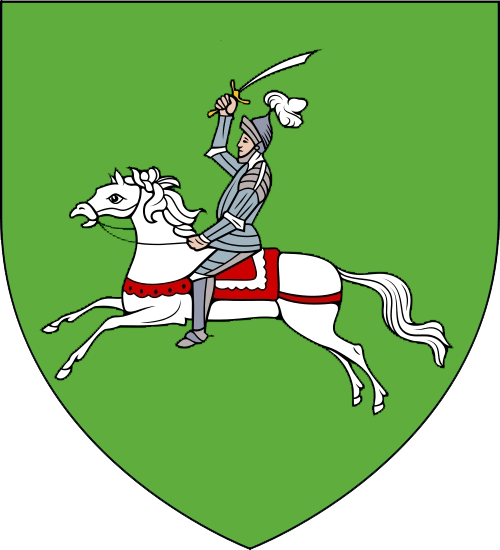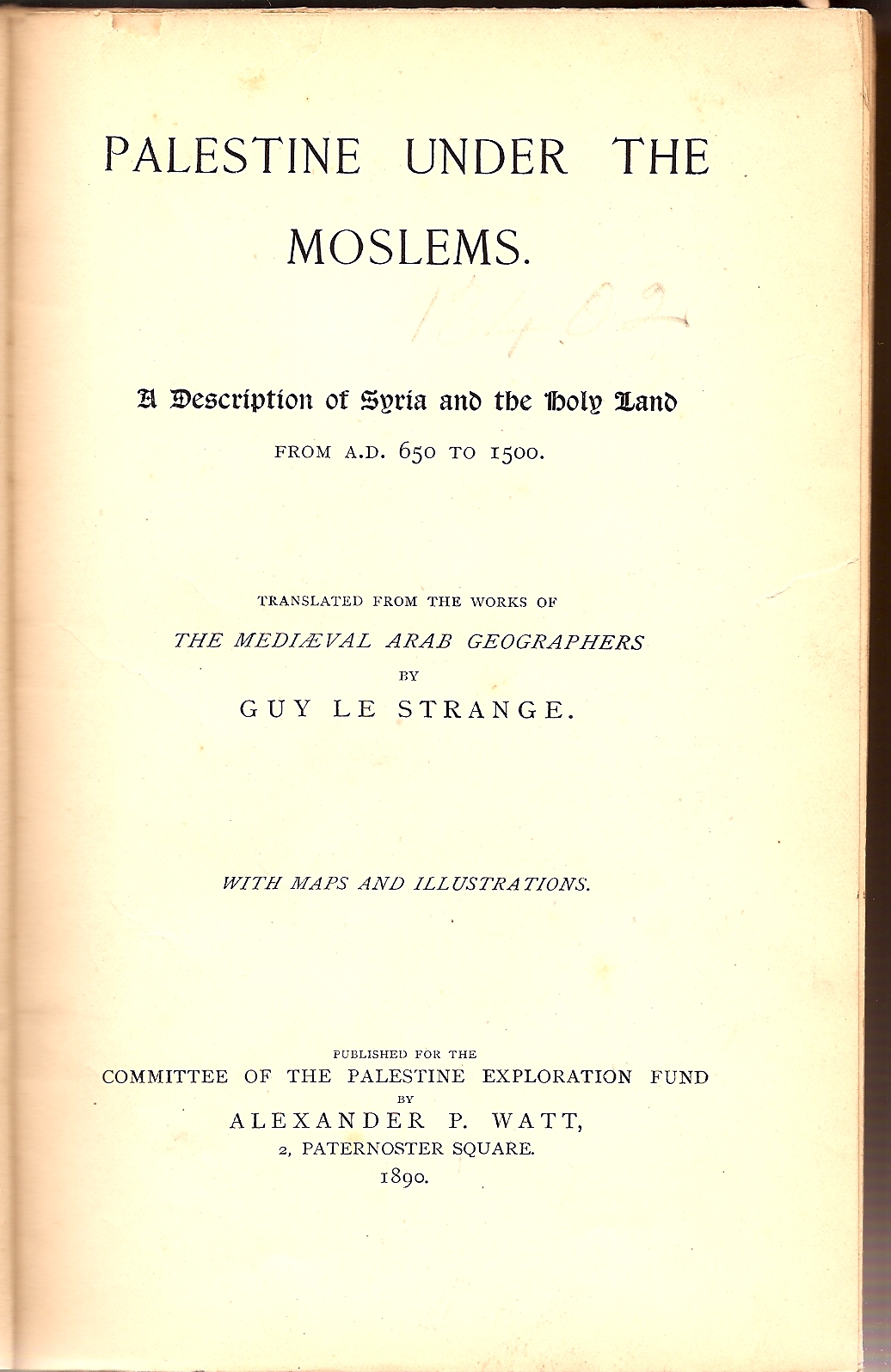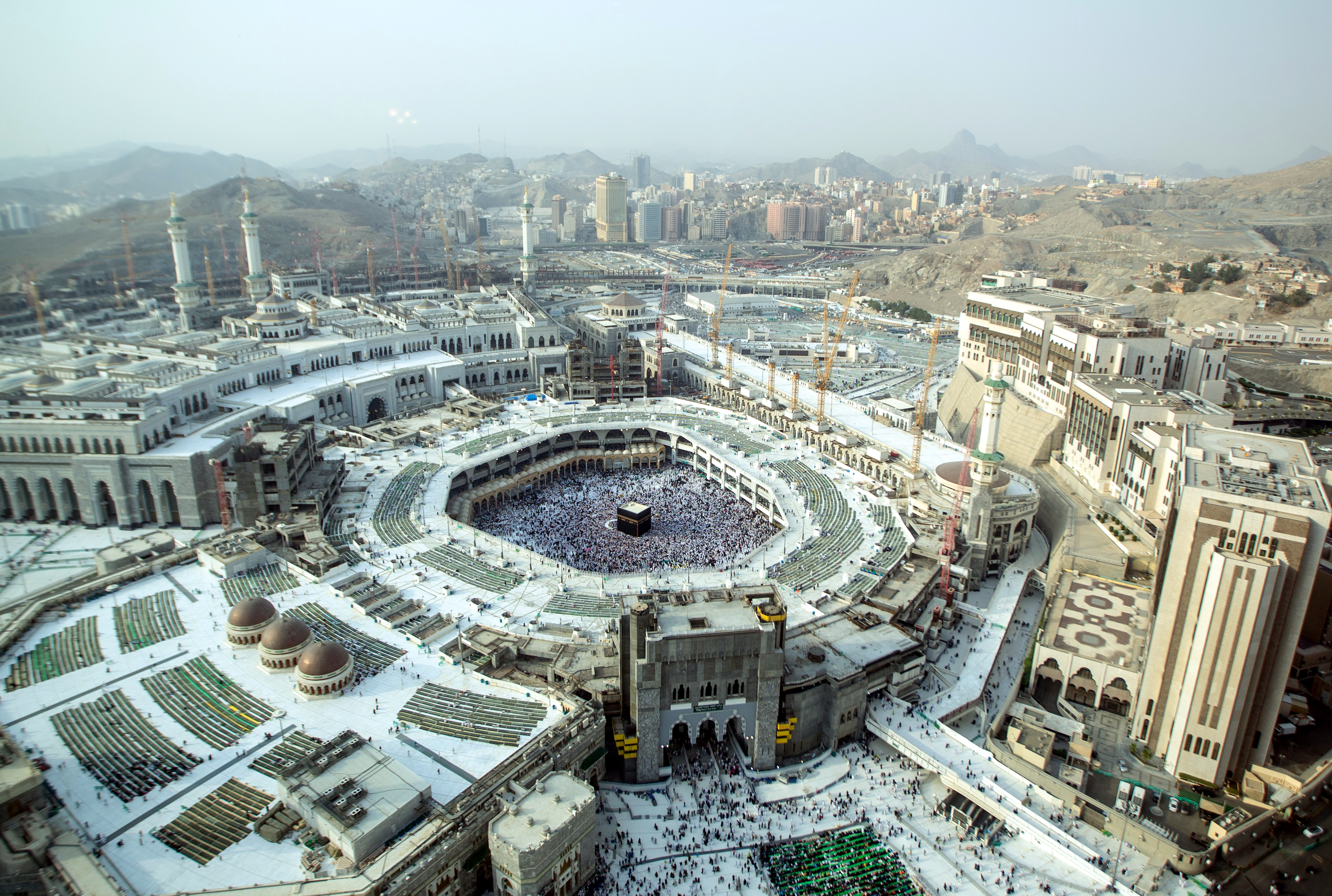|
Qaṣr Ibn Hubayra
Qasr Ibn Hubayra () was a city of medieval Iraq, north of Hillah and Babylon. History The name ''Qasr Ibn Hubayrah'' means "the castle or palace of Ibn Hubayra", referring to the city's founder, Yazid ibn Umar ibn Hubayra. He had been governor of Iraq in the late 740s, under the Umayyad caliph Marwan II, but died before his palace was completed. It was located midway between Kufa in the south and Baghdad in the north, close to the Euphrates river and amidst the various channels that were used for carrying goods to the town's markets. The later geographer Yaqut al-Hamawi reports that the first Abbasid caliph, al-Saffah, oversaw its completion, then took up residence there. Al-Saffah named it al-Hashimiya after his ancestor, Hashim, but the name never achieved widespread use. The city thus reportedly served as the capital of the nascent Abbasid Caliphate, before the construction of Baghdad. It is likely, however, that Yaqut confused his account with the report in al-Baladhuri that ... [...More Info...] [...Related Items...] OR: [Wikipedia] [Google] [Baidu] |
Iraq
Iraq, officially the Republic of Iraq, is a country in West Asia. It is bordered by Saudi Arabia to Iraq–Saudi Arabia border, the south, Turkey to Iraq–Turkey border, the north, Iran to Iran–Iraq border, the east, the Persian Gulf and Kuwait to the Iraq–Kuwait border, southeast, Jordan to Iraq–Jordan border, the southwest, and Syria to Iraq–Syria border, the west. The country covers an area of and has Demographics of Iraq, a population of over 46 million, making it the List of countries by area, 58th largest country by area and the List of countries by population, 31st most populous in the world. Baghdad, home to over 8 million people, is the capital city and the List of largest cities of Iraq, largest in the country. Starting in the 6th millennium BC, the fertile plains between Iraq's Tigris and Euphrates rivers, referred to as Mesopotamia, fostered the rise of early cities, civilisations, and empires including Sumer, Akkadian Empire, Akkad, and Assyria. Known ... [...More Info...] [...Related Items...] OR: [Wikipedia] [Google] [Baidu] |
Abbasid Caliphate
The Abbasid Caliphate or Abbasid Empire (; ) was the third caliphate to succeed the Islamic prophet Muhammad. It was founded by a dynasty descended from Muhammad's uncle, Abbas ibn Abd al-Muttalib (566–653 CE), from whom the dynasty takes its name. After overthrowing the Umayyad Caliphate in the Abbasid Revolution of 750 CE (132 AH), they ruled as caliphs based in modern-day Iraq, with Baghdad being their capital for most of their history. The Abbasid Revolution had its origins and first successes in the easterly region of Khurasan, far from the Levantine center of Umayyad influence. The Abbasid Caliphate first centered its government in Kufa, modern-day Iraq, but in 762 the caliph al-Mansur founded the city of Baghdad as the new capital. Baghdad became the center of science, culture, arts, and invention in what became known as the Golden Age of Islam. By housing several key academic institutions, including the House of Wisdom, as well as a multiethnic and multi- ... [...More Info...] [...Related Items...] OR: [Wikipedia] [Google] [Baidu] |
History Of Babylon Governorate
History is the systematic study of the past, focusing primarily on the human past. As an academic discipline, it analyses and interprets evidence to construct narratives about what happened and explain why it happened. Some theorists categorize history as a social science, while others see it as part of the humanities or consider it a hybrid discipline. Similar debates surround the purpose of history—for example, whether its main aim is theoretical, to uncover the truth, or practical, to learn lessons from the past. In a more general sense, the term ''history'' refers not to an academic field but to the past itself, times in the past, or to individual texts about the past. Historical research relies on primary and secondary sources to reconstruct past events and validate interpretations. Source criticism is used to evaluate these sources, assessing their authenticity, content, and reliability. Historians strive to integrate the perspectives of several sources to develop a ... [...More Info...] [...Related Items...] OR: [Wikipedia] [Google] [Baidu] |
740s Establishments
*
{{Numberdis ...
74 may refer to: * 74 (number) * one of the years 74 BC, AD 74, 1974, 2074 * The 74, an American nonprofit news website * Seventy-four (ship), a type of two-decked sailing ship * 74 Galatea, a main-belt asteroid See also * List of highways numbered All lists of highways beginning with a number. {{List of highways numbered index Lists of transport lists ... [...More Info...] [...Related Items...] OR: [Wikipedia] [Google] [Baidu] |
Hindiya Barrage
The Hindiya Barrage is a barrage on the Euphrates south of the town of Musayyib in Babil Governorate of Iraq. Located north of the Al-Hindiya District, it was designed by British civil engineer William Willcocks in response to the silting up of the Hillah branch of the Euphrates. Construction of the dam, with a length of over , lasted between 1911 and 1913. Between 1984 and 1989, a new dam was built several kilometres upstream as a replacement for the Hindiya Barrage. Background and planning Until 1875, the Euphrates split into two channels south of the town of Musayyib; the western Hindiya branch and the eastern Hillah branch. Due to changes in the water management of the wider Tigris–Euphrates river system in 1875, severe floodings of the Euphrates downstream from Fallujah occurred. As a result of these floodings, discharge into the lower Hindiya branch increased and the Hillah branch started to silt up. In 1909, discharge into the Hillah branch had been reduced to per sec ... [...More Info...] [...Related Items...] OR: [Wikipedia] [Google] [Baidu] |
McGuire Gibson
The Maguire ( ) family is an Irish clan based in County Fermanagh. The name derives from the Gaelic , which is "son of Odhar" meaning 'sallow' or 'pale-faced'. According to legend, this relates to the eleventh descendant of Colla da Chrich, great-grandson of Cormac mac Airt, who was monarch of Ireland about the middle of the third century. From the 13th to the 17th centuries, the Maguire family were kings of Fermanagh. Naming conventions The surname has been anglicized variously as McGuire, McGwire, McGwyre and most commonly, Maguire (from variant form ''Mag Uidhir''). History According to historian C. Thomas Cairney, the Maguires were a chiefly family of the Oirghialla (or Airgíalla or Oriel) who were a tribe of the Laigin, the third wave of Celts to settle in Ireland during the first century BC. The Maguire sept is primarily associated with modern-day County Fermanagh. They possessed the entire county, also known as Maguire's Country, from about 1250 C.E. and maintained ... [...More Info...] [...Related Items...] OR: [Wikipedia] [Google] [Baidu] |
Guy Le Strange
Guy Le Strange (24 July 1854 – 24 December 1933) was a British Orientalist noted especially for his work in the field of the historical geography of the pre-modern Middle Eastern and Eastern Islamic lands, and his editing of Persian geographical texts. He was a scholar of the Persian, Arabic, and Spanish languages. Le Strange was one of the original trustees of the E. J. W. Gibb Memorial, an organisation which since 1905 has published the Gibb Memorial Series. He was born in Brussels, Belgium, the youngest child of Henry L'Estrange Styleman Le Strange of Hunstanton Hall, Norfolk, educated at Clifton College and died in Cambridge Cambridge ( ) is a List of cities in the United Kingdom, city and non-metropolitan district in the county of Cambridgeshire, England. It is the county town of Cambridgeshire and is located on the River Cam, north of London. As of the 2021 Unit ....Probate Registry Grant – Feb 1934. Works Books * * * * * * Index Articles * Referen ... [...More Info...] [...Related Items...] OR: [Wikipedia] [Google] [Baidu] |
Jama Masjid
A congregational mosque or Friday mosque (, ''masjid jāmi‘'', or simply: , ''jāmi‘''; ), or sometimes great mosque or grand mosque (, ''jāmi‘ kabir''; ), is a mosque for hosting the Friday noon prayers known as ''jumu'ah''.See: * * * * * * * * * It can also host the Eid prayers in situations when there is no '' musalla'' or '' eidgah'' available nearby to host the prayers. In early Islamic history, the number of congregational mosques in one city was strictly limited. As cities and populations grew over time, it became more common for many mosques to host Friday prayers in the same area. Etymology The full Arabic term for this kind of mosque is ''masjid jāmi‘'' (), which is typically translated as "mosque of congregation" or "congregational mosque". "Congregational" is used to translate ''jāmi‘'' (), which comes from the Arabic root "ج - م - ع" which has a meaning ‘to bring together’ or ‘to unify’ (verbal form: and ). In Arabic, the term is typically ... [...More Info...] [...Related Items...] OR: [Wikipedia] [Google] [Baidu] |
History Of The Jews In Iraq
The history of the Jews in Iraq (, ', ; , ) is documented from the time of the Babylonian captivity . Iraqi Jews constitute one of the world's oldest and most historically significant Jewish communities. The Jewish community in Mesopotamia, known in Jewish sources as "Babylonia", traces its origins to the early sixth century BCE, when a large number of Judeans from the defeated Kingdom of Judah were exiled to Babylon in several waves by the Neo-Babylonian Empire. A few decades later, some had returned to Judah, following the edict of Cyrus. During this time, the Temple in Jerusalem Second Temple, was rebuilt, significant changes in Jewish religious tradition were made, and the Judeans were led by individuals who had returned from Babylonia, such as Zerubbabel, Ezra and Nehemiah. Though not much is known about the community in Babylonia during the Second Temple period, Second Temple and Tannaim, Mishnaic periods, scholars believe the community was still thriving at that time. Th ... [...More Info...] [...Related Items...] OR: [Wikipedia] [Google] [Baidu] |
Al-Muqaddasi
Shams al-Din Abu Abd Allah Muhammad ibn Ahmad ibn Abi Bakr, commonly known by the '' nisba'' al-Maqdisi or al-Muqaddasī, was a medieval Arab geographer, author of ''The Best Divisions in the Knowledge of the Regions'' and ''Description of Syria (Including Palestine)''. Al-Maqdisi is one of the earliest known historical figures to self-identify as a Palestinian, having done so during one of his travels in Persia. Biography Sources Outside of his own work, there is little biographical information available about al-Maqdisi.Miquel 1993, p. 492. He is neither found in the voluminous biographies of Ibn Khallikan (d. 1282) nor were the aspects of his life mentioned in the works of his contemporaries.Al-Mukaddasi, ed. Le Strange 1886, piii/ref> Early life and education He was born in Jerusalem in and belonged to a middle-class family whose roots in the city's environs dated from the period approximate to the 7th-century Muslim conquest.Le Strange 1890, pp56/ref> According to his ... [...More Info...] [...Related Items...] OR: [Wikipedia] [Google] [Baidu] |
Sura Canal
A ''surah'' (; ; ) is an Arabic word meaning 'chapter' in the Quran. There are 114 ''suwar'' in the Quran, each divided into verses (). The ''suwar'' are of unequal length; the shortest ''surah'' (al-Kawthar) has only three verses, while the longest (al-Baqarah) contains 286 verses.Muhammad Mustafa Al-A'zami (2003), ''The History of The Qur'anic Text: From Revelation to Compilation: A Comparative Study with the Old and New Testaments'', p.70. UK Islamic Academy. . The Qur'an consists of one short introductory chapter (Q1), eight very long chapters, making up one-third of the Qur'an ( Q2‒ 9); 19 mid-length chapters, making up another one-third (Q10‒28); and 86 short and very short ones of the last one-third (Q29‒114). Of the 114 ''suwar'' in the Quran, 86 are classified as Meccan (), as according to Islamic tradition they were revealed before Muhammad's migration to Medina (''hijrah''), while 28 are Medinan (), as they were revealed after. This classification is only app ... [...More Info...] [...Related Items...] OR: [Wikipedia] [Google] [Baidu] |
Al-Baladhuri
ʾAḥmad ibn Yaḥyā ibn Jābir al-Balādhurī () was a 9th-century West Asian historian. One of the eminent Middle Eastern historians of his age, he spent most of his life in Baghdad and enjoyed great influence at the court of the caliph al-Mutawakkil. He travelled in Syria and Iraq, compiling information for his major works. His full name was Ahmad Bin Yahya Bin Jabir Al-Baladhuri (), Balazry Ahmad Bin Yahya Bin Jabir Abul Hasan or Abi al-Hassan Baladhuri. Biography Al Baladhuri's ethnicity has been described as Persian by his contemporaries including Ibn Nadim, but some scholars have surmised that he was of Arab descent solely since he spent most of his life in Baghdad. Baladhuri was a Persian speaker who translated Persian works to Arabic. Nonetheless, his sympathies seem to have been strongly with the Arabs, for Masudi refers to one of his works in which he rejects Baladhuri's condemnation of non-Arab nationalism Shu'ubiyya. He is certainly not the first Persian ... [...More Info...] [...Related Items...] OR: [Wikipedia] [Google] [Baidu] |






